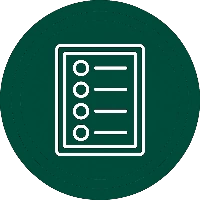Your data warehouse is supposed to be a source of truth. Yet, many teams find themselves questioning the data within it. Flawed reports create confusion. Business leaders lose trust in the analytics. Your powerful system, meant to provide clear answers, becomes a source of debate.
This problem is common. It is also solvable. The solution is data warehouse governance.
This is not about creating restrictive rules or slowing things down. It is the exact opposite. Governance is the framework that builds trust in your data. It provides the control needed to turn a chaotic data store into a reliable engine for business intelligence. This guide gives you the best practices to build that framework.
What is Data Warehouse Governance (And Why It’s Not Just General Data Governance)
Data warehouse governance is the framework of policies, roles, and standards for managing the quality, security, and compliance of data stored within an enterprise data warehouse. Think of it as a specialized rulebook for your most critical analytical data.
While it is part of the larger data governance family, its focus is much sharper. It is dedicated to making your business intelligence reliable and your reporting trustworthy.
Data Warehouse vs General Data Governance
The difference lies in scope and intent. General data governance looks at all information across a company. Data warehouse governance concentrates only on the data used for analytics. This table shows the main differences.
| Aspect | Data Warehouse Governance | General Data Governance |
|---|---|---|
| Scope | Structured, historical data ready for analytics. | All data assets across the entire organization. |
| Primary Goal | Power reliable business intelligence and reporting. | Manage overall data risk, value, and compliance. |
Why Prioritize Governance for Your Data Warehouse?
Prioritizing data warehouse data governance is about protecting your investment and getting a better ROI. An ungoverned data warehouse creates doubt and leads to bad decisions. A well-governed one becomes the company’s trusted single source of truth. It turns a potential liability into a high-value asset.
For Business Leaders & CDOs – Driving Confident, Data-Driven Decisions
For leadership, governance is a tool for risk mitigation and better strategy. It builds the foundation of trust needed to act on the information your systems provide.
- Increase Trust in Reports: Stop debating whose numbers are correct. Make decisions based on data everyone believes in.
- Power Reliable Predictive Analytics: Build future-looking models on a solid footing of high-quality historical data.
- Get Clear ROI on Data Assets: Find more value from your BI and analytics platforms when they run on trustworthy data.
- Simplify Compliance and Audits: Face audits with confidence, with data that is secure, traceable, and properly managed.
For IT & Data Managers – Building a Secure and Stable Data System
For technical teams, governance creates stability and efficiency. It stops the constant fire-fighting caused by poor data. This gives your team the space to focus on high-impact work.
- Improve Data Quality and Consistency: Set clear standards that reduce errors and create reliable data consistency across reports.
- Make Audits Easier: Prove where data came from and how it is protected.
- Strengthen Data Security: Define and apply clear rules on who can access sensitive information.
- Build a Scalable Framework: Create a stable system that can grow with the business without breaking down.
Move from Data Chaos to Governance Clarity
We pinpoint the exact weaknesses in your data warehouse. We analyze your current governance framework, data processes, and technology stack to find the gaps holding you back.
Get a clear, actionable plan to build a trusted data warehouse.

Get a clear, actionable plan to build a trusted data warehouse.

What Are the 4 Essential Pillars of a DWH Governance Framework?
A strong data governance in data warehouse program is built on four pillars. Each one addresses a specific part of the data challenge. Together, they create a complete system for managing your analytical data.
Data Quality Management
This is the process of making sure your data is accurate, complete, and reliable for analytics. It involves setting clear standards for your information. The goal is to catch and fix errors before they impact business reports.
Metadata Management & Data Lineage
This pillar is about creating a “data catalog” for your warehouse. It answers critical questions: Where did this data come from? How was it changed? What does it mean? Strong metadata management gives you a clear map of your data’s journey, a concept known as data lineage.
Data Security & Access Control
This focuses on protecting sensitive information. It involves creating and applying clear access policies that control who can see and use specific datasets. For example, you can restrict access to sensitive customer PII or financial records.
Data Stewardship and Ownership
This pillar is about accountability. It assigns clear responsibility for data to specific people. A Data Owner is a business leader accountable for a set of data. A Data Steward is the hands-on expert responsible for managing that data according to the set rules.
Our Data Consulting Services You Might Find Interesting
How Do You Implement Data Warehouse Governance?
To implement a governance framework, you follow a five-step process that moves from planning to action. The guide starts with building a team, then creating rules, assigning roles, using tools for automation, and finally, measuring your progress.
Step 1: Form a Cross-Functional Governance Council
Your first move is to create a team with members from both business and IT departments. This group makes sure the governance rules support business goals and are technically practical.
Step 2: Define and Prioritize Policies
You do not need to govern everything at once. Start with your most critical data, like customer or sales information. Define clear standards for its quality, security, and use.
Step 3: Assign Clear Roles and Responsibilities
Formally designate people to be Data Owners and Data Stewards. When people have clear roles, accountability becomes part of the culture. Everyone knows who is responsible for what.
Step 4: Use Technology for Automation
Manually checking every piece of data is impossible. Use technology to make your policies work automatically. A data catalog helps with metadata. BI platforms like Power BI can use certified datasets to show users what data is governed and safe to use.
Step 5: Monitor, Measure, and Iterate
Governance is an ongoing program, not a one-time project. Define Key Performance Indicators (KPIs) to track its effectiveness. Measure things like data quality scores or the number of data errors to show progress and find areas for improvement.
Ready to Build a Foundation of Trust in Your Data?
Putting a full governance framework in place is a complex project. It requires specific expertise and dedicated resources. In-house teams are often stretched thin with other priorities. An expert partner provides the focus and skills to get the job done right, turning your plans into a reality.
Don’t let data chaos undermine your business intelligence. Contact Multishoring’s data and analytics experts today to learn how our tailored solutions can help you implement a robust data warehouse governance framework, faster.








